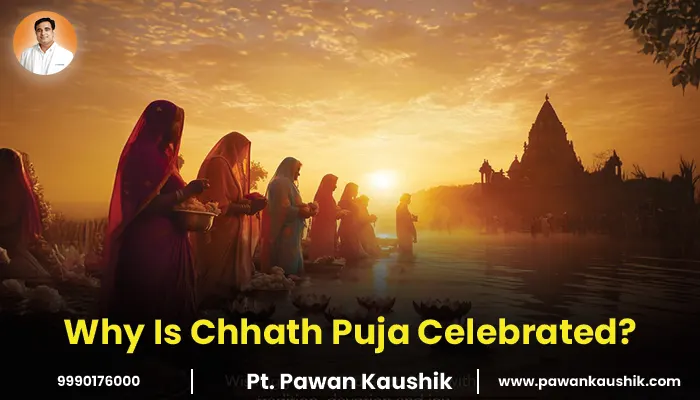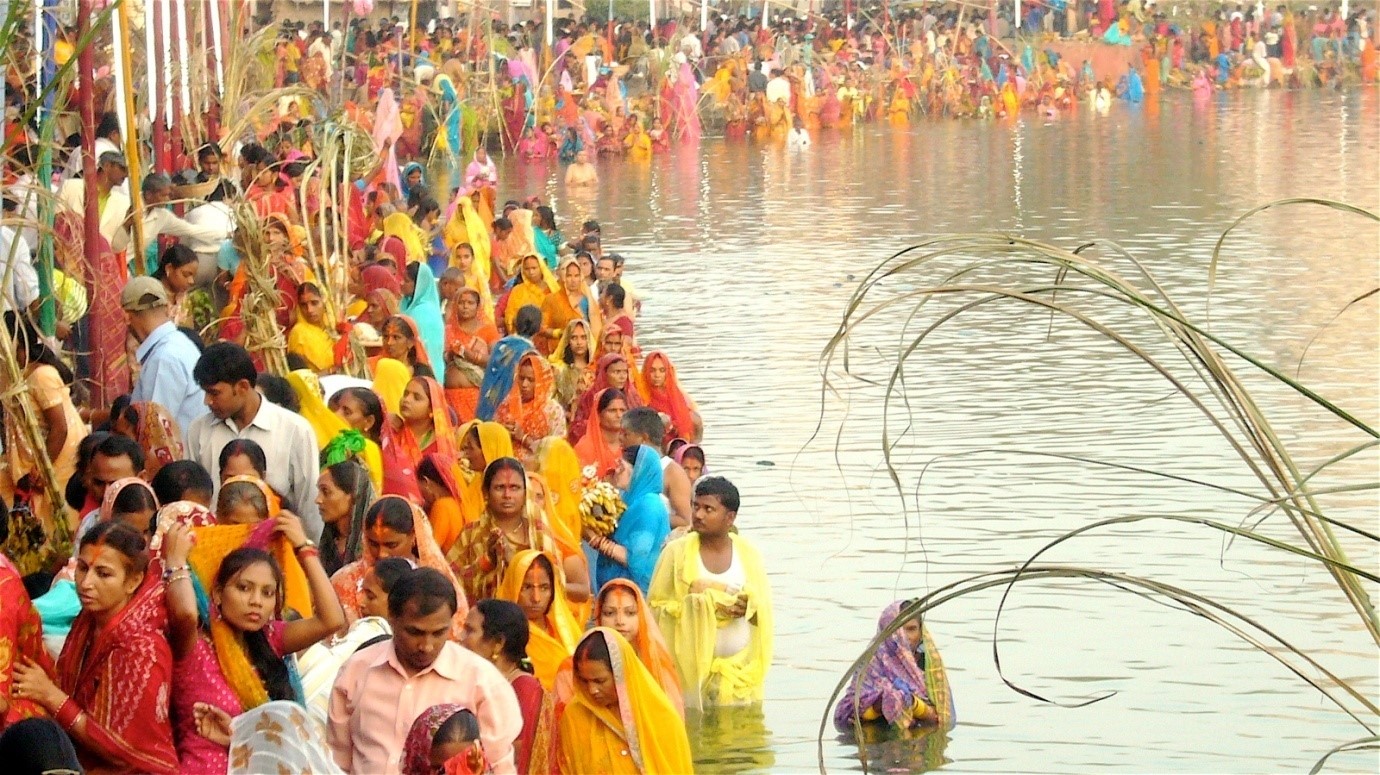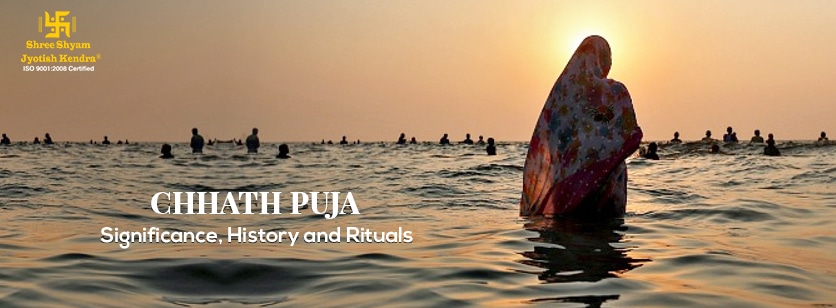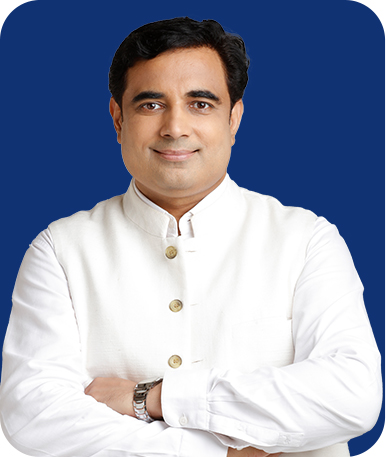 Chhath Puja is a special festival in the Hindu culture that honours the God Sun (Surya). This festival holds deep significance, where people worship both forms of the Lord Sun — the rising and the setting. The festival is primarily celebrated across Bihar, Jharkhand, and other parts of North India.
Chhath Puja is a special festival in the Hindu culture that honours the God Sun (Surya). This festival holds deep significance, where people worship both forms of the Lord Sun — the rising and the setting. The festival is primarily celebrated across Bihar, Jharkhand, and other parts of North India.
Through Chhath Puja, we offer prayers to Lord Surya and express our gratitude to Him, as He is the source of life and energy. Along with Lord Surya, Chhathi Maiyan is also worshipped, who is the divine mother and protector of children. On the auspicious event of Chhath Puja, Women take fast and give Arghya (offering water to the deity Sun) and pray to Chhathi Maiyan for the welfare of their family and children.
In this blog, we will cover the celebration of Chhath Puja, how and why Chhath Puja is celebrated and highlight the ritual associated with it. Before we move ahead and highlight the significance of celebrating Chhath Puja, it is important to highlight the Chhath Puja 2025 date.
2025 Chhath Puja Date
As the festival of Chhath Puja is approaching, people are constantly searching for the Chhath Puja date (Chhath Puja kab hain). The festival is celebrated for 4 days, and people are often confused about the dates and days of the festival. Let’s uncover the exact dates of Chhath Puja in 2025:Chhath Puja will be celebrated from the 25th of October to the 28th of October, 2025:
- Nahay khay (नहाय खाय- chaturthi) falls on the 25th of October 2025.
- Kharna (panchami) falls on the 26th of October 2025
- Sandhya Arghya falls on the 27th of October 2025
- Paran Arghya (Usha Arghya) falls on the 28th of October 2025.
Also check out our thoughts on Why is Ram Navami Celebrated Twice in India
Why Chhath Puja is Celebrated?
Divine Significance
Chhath Puja is celebrated to pay honour to the Lord Sun, who is the source of light, energy and life on earth. As per Hindu scriptures and astrology, the Sun holds immense importance and it governs the soul, personality, public image, ego, etc. The sun is the giver of light, and it dispels darkness. In Hinduism, the Sun is considered the God, and in astrology, it is the king of planets.Another essence behind the Chhath puja celebration is the worship of Chhathi Maiyan, also called as deity Usha, the folk goddess of Chhath. People worship Chhathi Maiyan to invoke her blessing that assures the well-being of the children of devotees.
Giving Arghya (offering water) to the Sun during the dawn and early morning, standing on the pond and taking a holy dip is believed to connect with the Sun’s blessing energy that offers purification and renewal.
Devotees observe this festival to seek divine blessings for happiness, success, and a prosperous life. The rituals, including offering prayers to the Sun during sunrise and sunset, reflect harmony with nature and appreciation for the Sun’s life-giving energy.
Historical Significance
- Mythological Roots: The festival is linked to legends from Hindu epics, where figures like Lord Rama and Sita, as well as Karna and Draupadi from the Mahabharata, offered prayers and rituals to the Sun, which became the tradition, and since then, Chhath puja has been celebrated.
- Women-Centric Rituals: Traditionally, the festival emphasizes women’s devotion, with Chhathi Maiya — the guardian of children — being the central figure of the worship.
History and Origins of Chhath Puja
Chhath Puja has a long history and deep roots in Hindu tradition. Its exact origin is not known, but the festival is believed to be older than many ancient texts. Worship of the Sun is mentioned in the Rigveda, the Ramayana, and the Mahabharata.
According to the Ramayana, when Lord Rama returned from exile (vanvas), he and Sita observed a fast to honor the Sun God. This practice later became what we now know as Chhath Puja.
In the Mahabharata, Karna, the son of the Sun God, is said to have prayed to the Sun while standing in water and given food to the needy. These acts are considered the beginnings of today’s Chhath Puja rituals.
Once a family starts performing Chhath Puja, it is expected to continue every year. If there is a death in the family, the festival can be skipped for that year.
How is Chhath Puja Celebrated?
The celebration of Chhath Puja happens over four days, each with special rituals:
- Nahay Khay (First Day) On the first day, devotees take a holy bath and prepare simple vegetarian meals. This begins the festival and helps purify the body and mind.
- Kharna (Second Day) On the second day, devotees fast all day and break their fast in the evening with jaggery kheer and puris. They offer prayers to the Sun God as part of the ritual.
- Sandhya Arghya (Third Day) Devotees fast without food or water. They go to rivers or ponds, offer Arghya (water offering) to the setting Sun, and sing folk songs. This ritual connects them with the Sun’s energy and blessings.
- Usha Arghya (Fourth Day) The final day starts at sunrise. Devotees offer prayers to the rising Sun and break their fast with prasad. This completes the Chhath Puja celebration.
Significance of Chhath Puja Rituals

Chhath Puja is not only about prayers but also about respecting nature. The rituals during sunrise and sunset bring calmness, increase energy, and reduce stress.
The festival focuses on women’s devotion, with Chhathi Maiya, the protector of children, at the center. Fasting and offering prayers are believed to bring happiness, prosperity, and success to families.
Eco-Friendly and Devotional Practices
Chhath Puja is eco-friendly. Devotees use natural items like bamboo baskets (soop) for prayers. Many devotees sleep on the floor and fast without water to show devotion. This is the heart of celebrating Chhath Puja in harmony with nature.Spiritual and Health Benefits
The rituals of Chhath Puja also benefit the body and mind:- Fasting and bathing in rivers help detoxify the body.
- Praying and focusing on devotion brings mental peace.
- Exposure to sunlight during Arghya offers energy and vitality.
 +91 9990176000
+91 9990176000 +91 9999097600
+91 9999097600
 CALENDAR 2025
CALENDAR 2025











